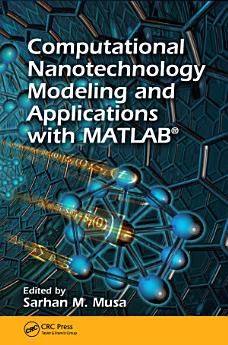Computational Nanotechnology: Modeling and Applications with MATLAB®
Acerca de este libro electrónico
Computational Nanotechnology: Modeling and Applications with MATLAB® provides expert insights into current and emerging methods, opportunities, and challenges associated with the computational techniques involved in nanoscale research. Written by, and for, those working in the interdisciplinary fields that comprise nanotechnology—including engineering, physics, chemistry, biology, and medicine—this book covers a broad spectrum of technical information, research ideas, and practical knowledge. It presents an introduction to computational methods in nanotechnology, including a closer look at the theory and modeling of two important nanoscale systems: molecular magnets and semiconductor quantum dots.
Topics covered include:
- Modeling of nanoparticles and complex nano and MEMS systems
- Theory associated with micromagnetics
- Surface modeling of thin films
- Computational techniques used to validate hypotheses that may not be accessible through traditional experimentation
- Simulation methods for various nanotubes and modeling of carbon nanotube and silicon nanowire transistors
In regard to applications of computational nanotechnology in biology, contributors describe tracking of nanoscale structures in cells, effects of various forces on cellular behavior, and use of protein-coated gold nanoparticles to better understand protein-associated nanomaterials. Emphasizing the importance of MATLAB for biological simulations in nanomedicine, this wide-ranging survey of computational nanotechnology concludes by discussing future directions in the field, highlighting the importance of the algorithms, modeling software, and computational tools in the development of efficient nanoscale systems.
Acerca del autor
Sarhan Musa received his Ph.D. in electrical engineering in 2001 from City University of New York. He is currently an associate professor in the engineering technology department of Prairie View A&M University, Texas. From 2009 to 2010, Dr. Musa was a visiting professor in the department of electrical computer engineering and also worked in the Nanoelectronic Systems Laboratory (NSL) at Rice University, Texas. His research interests include computational methods in nanotechnology, numerical modeling of electromagnetic systems, and computer communication networks. He currently serves on the Editorial Board of Journal of Modern Applied Science, and he is a senior member of the Institute of Electrical and Electronics Engineers (IEEE). He is also a 2010 Boeing Welliver Fellow.







